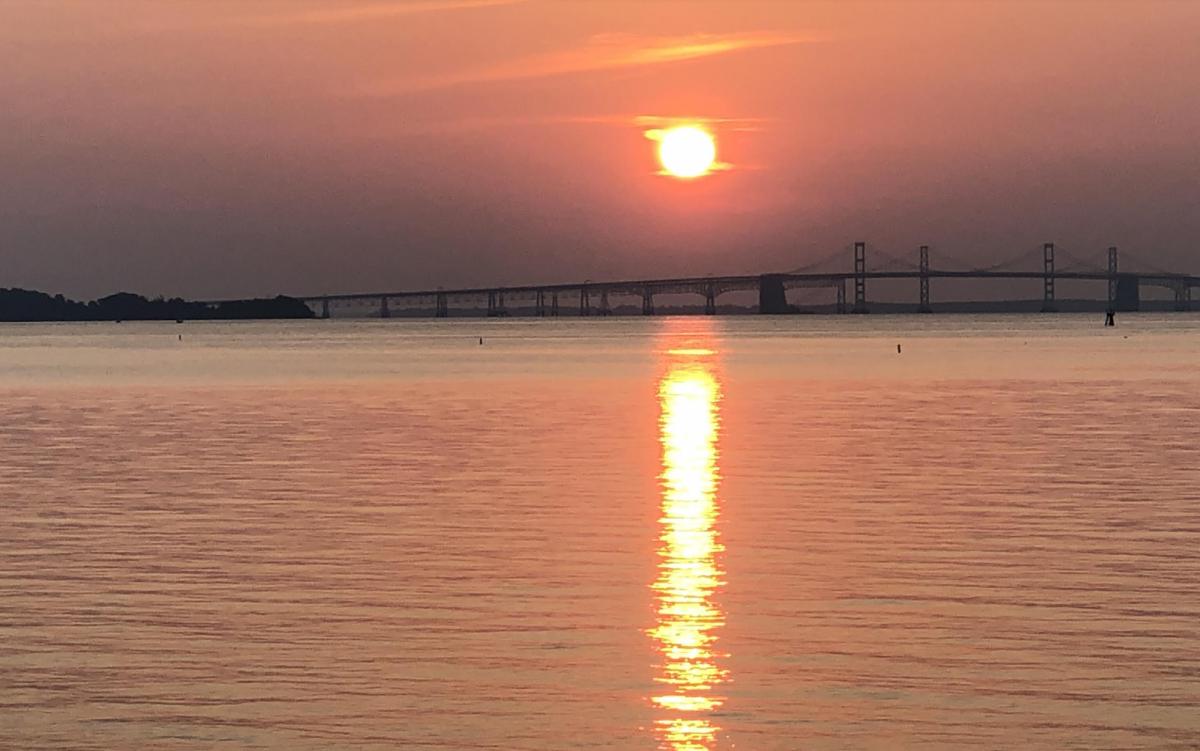Given permission by the federal government to proceed on the planning for a third Chesapeake Bay Bridge adjacent to the existing two spans, the state must commit $40 million to design a plan for review by the Federal Highway Administration.
Meanwhile, the Queen Anne’s County Commission is promoting an eight-lane Bay Bridge to replace the two heavily used spans with one structure that supposedly will accommodate future traffic. One of the spans was completed in 1952 and the other in 1973. Let the fierce battle begin between the build-the-bridge gang and the conservationists. The public discourse will be intense and bitter.
I side with the bridge opponents, with a twist. My recommendation is a rapid-transit option, acknowledging its huge cost and public opposition to traveling by any manner other than a car. Vehicular travel is still king in our country.
I have voiced this recommendation previously. I realize it is a poorly supported option, one that would relegate vehicles to a second thought. The primary question will be: how can we (parents) carry our children, their toys and luggage to the beach? Is it possible? Is it practical?
 I am an optimist. The rapid transit cars could contain storage. Sounds simple to me; maybe it is not. The rapid transit could use the right of the way running in the middle of Route 50. Another possibility would be a multi-level bridge that would bear the brunt of increasing commuter traffic on one level, and rapid transit for beachgoers on the other level.
I am an optimist. The rapid transit cars could contain storage. Sounds simple to me; maybe it is not. The rapid transit could use the right of the way running in the middle of Route 50. Another possibility would be a multi-level bridge that would bear the brunt of increasing commuter traffic on one level, and rapid transit for beachgoers on the other level.
Most importantly, traffic would not build to a more onerous level than is the case now. And, even more critically, valuable Eastern Shore farmland would not be lost. Shore life would be undisturbed. Motorists would not rule the Delmarva Peninsula. New residential development would not mushroom.
Unlike ardent conservationists, I believe another span is necessary, but under the already stated conditions. I believe it is inevitable, though years and millions and millions of dollars in the future. It will be a tedious slough for the pro-bridgers.
Projected to cost at least $10 billion, I suspect it will be closer to $20 billion, if not more, when all is said and done. Public works projects such as this one will require a humongous investment of federal financial support. Politics, lawsuits and recessions will interfere. The process will be rife with controversy.
I do commend the Maryland Department of Transportation (MDOT) for taking a comprehensive approach that views a third or replacement bridge as necessitating an improved road system on both the eastern and western shores. MDOT also understands the environmental damage to Bay creatures and pollution.
Consideration of another span assumes that traffic will increase along with expanding population on both shores. That assumption is questionable if climate change and global warming erode significant acreage. Current residents might move to higher elevations.
Count me as an intensely interested observer. Though a self-exile in Annapolis, I love the Eastern Shore and want to protect its pristine qualities. The impact too on the Western Shore will be significant and harmful. Valuable property will vanish under concrete. Too much is at stake.
This will not be my last Bay Bridge column. The future cannot be ignored. The two existing spans changed life on the Shore. Nothing was the same afterwards. A third span, either adjoining what is there or replacing it with an eight-lane structure, will be an irreversible game-changer.
Columnist Howard Freedlander retired in 2011 as Deputy State Treasurer of the State of Maryland. Previously, he was the executive officer of the Maryland National Guard. He also served as community editor for Chesapeake Publishing, lastly at the Queen Anne’s Record-Observer. In retirement, Howard serves on the boards of several non-profits on the Eastern Shore, Annapolis and Philadelphia.



Lesley Israel says
I remember as a kid waiting withmy parents for a ferry to go to the beacfh! Anything new would be even better/!!
Brian Wroten says
I’m sure quite a few pro-bridgers would also be in favor of a light rail add-on. It would be a dissapointment if all we got from a new bridge was more over-reliance on personal car based infrastructure. Maryland already has the 3rd longest average commutes in the country!
Tom Lane says
Good article. My personal take is that the State’s study too narrow in scope and glossed over the real problem — traffic jams on Route 50 west and east of the bridge. Nothing can practically be done to improve the capacity of these roads. I’m sure the upcoming studies will show this.
I think a good alternative would be be a northern crossing from Route 295 in the North Point area to north of Rock Hall. Then a 65-mile per hour toll road to Route 301 and maybe beyond. It has many advantages: avoids the Baltimore shipping channel to allow a lower bridge or tunnel; keeps Baltimore metro shore traffic out of the Annapolis-Kent Island area; provides a relief route from Wilmington to Baltimore for hugely congested I-95.
Concerns about spurring development in Queen Anne’s County are legitimate. But these could be partially mitigated by controlling access points. On the Baltimore side, it would spur some much needed development. Route 295 was built for the Bethlehem Steel Plant and is underused.